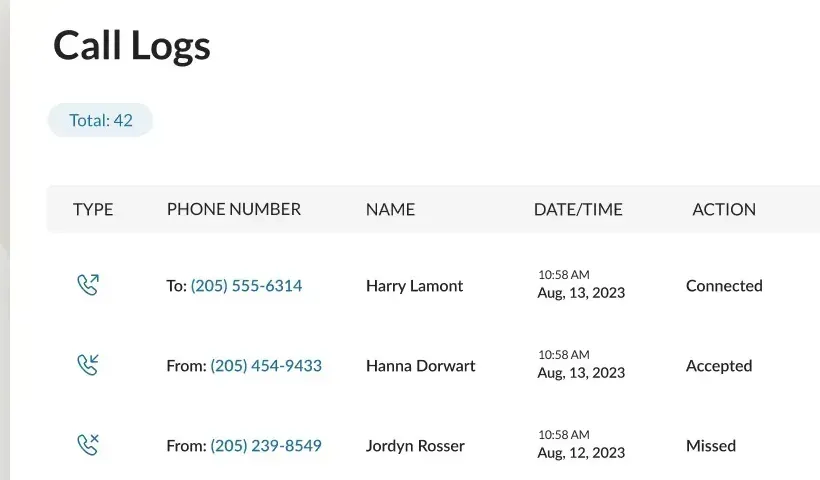4 Easy Ways to Develop Your Own First-Party Data
Applying first-party data to curated inventory can replace some of the signal loss from third-party cookie tracking.

By John Davis
Wednesday, June 24, 2025 at 1.07 p.m.
The first time I heard about using first-party data, I got worried. I looked around my desk and didn’t see any.
Gulp! Here’s another party I haven’t been invited to.
Soon, I learned I didn’t need to fret. Every website owner has first party data. Meanwhile,
publishers and retailers are absolutely swimming in it.
If you’ve heard about the advertising imperative to leverage your own first-party data in your marketing, I want you to get excited about first-party data.
But first, a quick refresher on the types of data you might encounter in the digital world:
- First-party data is the information you collect directly from your audience based on their behaviors on your website, app, phone, or in the real world. You can consider this data reliable, privacy-friendly, and unique to your business.
- Second-party data is simply someone else’s first-party data. You get access to it through partnerships, and it’s generally accurate and privacy-compliant because it comes from a single source.
- Third-party data refers to data that may be collected from multiple websites and applications, aggregated and sold by independent companies called data brokers. This behavioral targeting data used to be the go-to for digital advertising, but technology changes have made it harder to use and less actionable.
Now, back to your first-party data. Take a look at the sources you may already be using:.
- CRM: Software solutions like HubSpot, MailChimp, or Salesforce are considered Customer Relationship Management tools. These tools can collect information about your customers and prospects, including email addresses, street addresses, and company names. Most MailChimp users haven't noticed that this system captures their customers' latitude and longitude coordinates when customers confirm their email address. This can be handy when targeting advertising via geo-fencing.
- Phone Call Tracking: Software such as CallRail, Podium, and RingCentral collect the names and phone numbers for people who call your business. With this list, you can use advertising to anonymously prompt repeat business or stay top of mind among prospects.
- Point of Sale Systems: We don’t see too many dumb cash registers anymore. Most retailers are using systems like Clover, Square, or Toast to process transactions using phone lines or the Internet. These services can capture names, phone numbers, email addresses, delivery addresses, etc. With this information, you might want to advertise to your high-ticket customers or solicit sales from customers you haven’t served recently.
- Your Website: You can choose to advertise to visitors after they come to your website — regardless of whether you use Wix, WordPress, or something else. You can even segment your prospects based on what pages they view or whether they complete a certain action on your website.
Your customers are interacting with you through all the ways above because they are interested in what you offer. After these contacts, customers expect you to meet their needs or predict their preferences.
After you collect your first-party data, you might choose advertising tactics like these:
- People-Based Marketing: We’ll use our technology to anonymously target advertising to your contacts in a privacy-compliant way.
- Lookalikes aka Audience Expansion: By examining your website visitors or customer list, we can advertise to people who share characteristics with your best customers.
- Cookieless Advertising: Targeting your advertising to your list of customers and prospects is no longer dependent on third-party cookies. Now we can apply these and other targeting requirements to advertising placements with hand-selected publishers without relying on targeting data being passed across multiple platforms; it can come from the ad inventory supplier itself.
Making Your Way to the Deep End of the Data Pool: Explore New Paid Media Channels
As you consider leveraging your first-party data, don’t box yourself into just two digital playgrounds. Google and Facebook are heavy hitters, but your audience is likely all over the Internet, browsing news sites, checking the weather, and engaging with streaming services. This is what we call the Open Web or the Open Internet. These website are not behind a walled Garden owned by a single tech giant. Instead, they are are typically available for free to any Internet user and often don't require user registration.
By branching out and experimenting with different paid media channels, you unlock more opportunities to connect with potential customers. Each advertising platform -- whether it’s Connected TV, Spotify, or mobile apps -- offers its own unique targeting options and audience behaviors. Testing new channels can reveal hidden pockets of in-market prospects who are more than willing to interact with your brand.
What does this mean for your first-party data efforts? Simply put, by casting a wider net across diverse platforms, you increase the touchpoints where people can see your ads and interact with your business.
This is your invitation. Don’t be shy about testing alternative paid media options. Shifting your advertising across multiple platforms helps you reach untapped audiences, collect richer data, and ensure you’re never reliant on a single tech giant to keep your business healthy.
Why First-Party Data Is Becoming More Important
Many of the targeting methods advertisers have leaned on for years -- building audiences based on browser cookies , and relying on detailed third-party intel from data brokers -- are being phased out. With consumers now able to easily opt out of personalized ads within mobile app and popular browsers like Firefox and Safari shutting the door on cookie-based targeting, advertisers need to adapt. Marketers now need to get creative and diversify the paid media channels they use, exploring everything from new formats like native ads to credible news apps to find receptive audiences.
By testing now, you can future-proof your marketing strategy and ensure your campaigns remain nimble, even as privacy changes make third-party cookies less actionable and your first-party data more valuable. In short, experimenting with new media channels isn’t just about coping with change. It’s about meeting your audience where they already are—and finding fresh, reliable ways to bring them home to your site.
Collecting First-Party Data with Lead Generation Forms
You might think lead generation forms are reserved for B2B behemoths chasing C-suite emails, but they're just as useful for e-commerce brands and local businesses. It's often a straightforward assignment for your web developer to add a form to an existing page on your website. If that's not an option, Crowd Louder Media can create a landing page for you.
And this is where you can show some restraint. You don’t need a detailed dossier on every user. Often, asking for the basics -- name and email address -- is plenty. This means you can collect contact information from people who show interest in your products without making them jump through hoops. It’s a frictionless way to grow your contact list for future campaigns, sale announcements, or loyalty incentives.
Even if you aren't blasting their e-mail inboxes or blowing up their instant message boxes, you can still use people-based marketing to gently keep these prospects warm until they are ready to act.
With lead generation forms in play, you can gather valuable, self-declared information directly from future customers -- setting yourself up for smarter, privacy-friendly marketing down the line. After all, they just filled out your form. They expect you to stay in touch.
The Power of Brand-Building in Gathering First-Party Data
Of course, giving people a reason to part with their information isn’t a simple matter. It’s about trust and value—two qualities that come straight from consistent brand-building.
Customers are far more likely to share details when they recognize your name and believe you’ll do right by them. Building a strong brand means steadily showing up with helpful content -- like guides, whitepapers, webinars, or even a helpful newsletter -- that actually makes a difference for your audience. Over time, this turns your brand into something more than a name; it becomes a trusted advisor. For example, MailChimp didn’t become the go-to for email marketing just by offering freebies—they built a reputation for helping marketers get real results.
Sometimes, you may have to try different offers, formats, or messages. But no matter what tactic you try, your relationship with your prospects rests on trust. Brand-building is about making that trust automatic, so users feel comfortable sharing their information and sticking around for what’s next.
Fortunately, collecting first-party data is a process that you’ve already started. Make sure your advertising partner is leveraging it for your business so you can tell your stakeholders you’ve joined the party.
Use the form below to start a conversation about collecting and leveraging your first-party data.
DOWNLOADABLE GUIDE
Make AI, Curation, and SPO Work for You
Get up to speed on how organizations are adapting to AI, Curation, and other developments in programmatic advertising.
Leverage Programmatic in 2025
Thank you for your interest. You can access the presentation here.
Please let us know if we should be working together.
Oops, there was an error sending your message. Please contact info@CrowdLouder.com.
Activate Your Audience
We will get back to you as soon as possible.
Please try again later.





